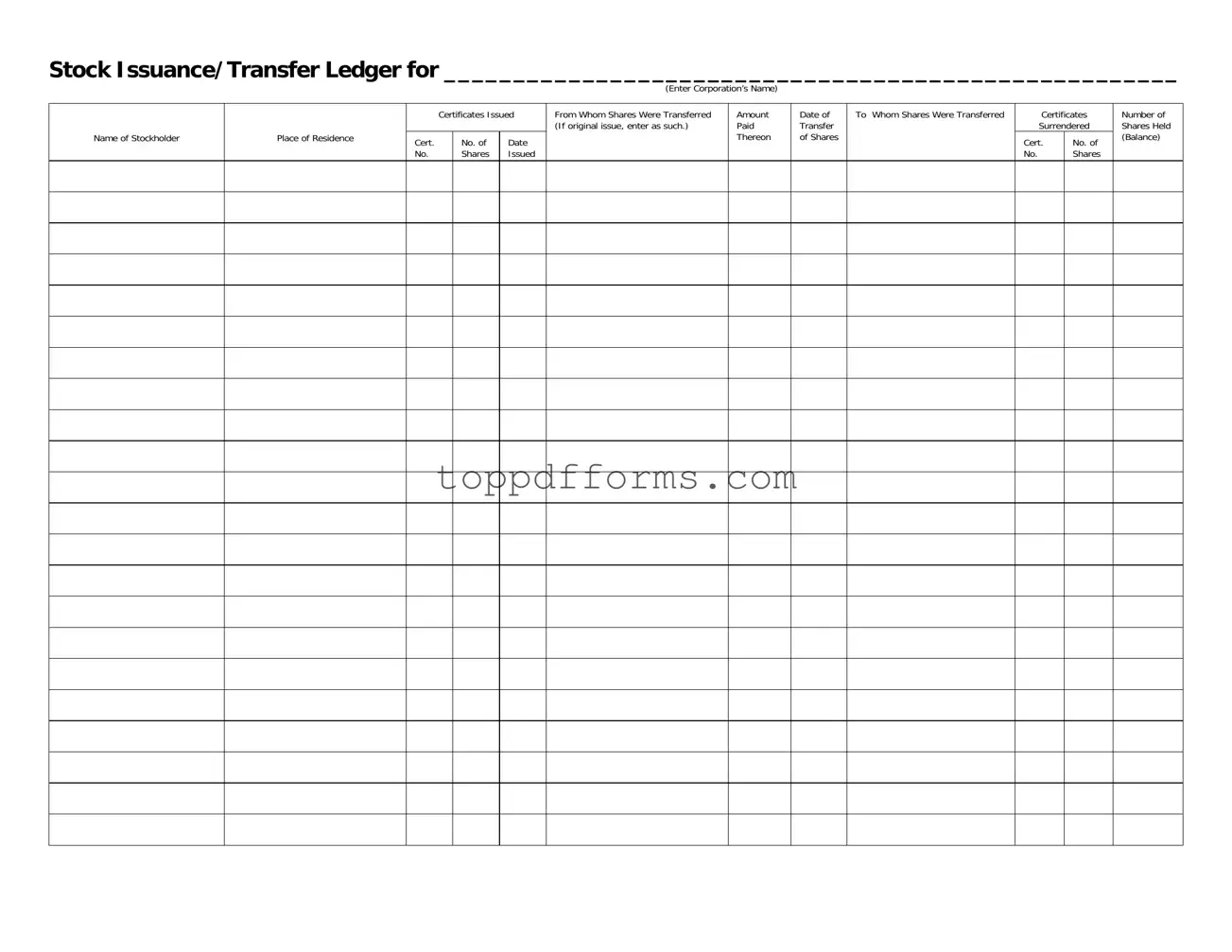What is the purpose of the Stock Transfer Ledger form?
The Stock Transfer Ledger form is used to document the issuance and transfer of stock within a corporation. It provides a detailed record of stockholders, the number of shares issued, and the transactions that occur when shares are transferred from one party to another. This form ensures transparency and helps maintain accurate records for corporate governance and compliance purposes.
What information is required to complete the form?
To complete the Stock Transfer Ledger form, you need to provide several key pieces of information. This includes the corporation's name, the names and addresses of stockholders, details of the certificates issued, dates of issuance and transfer, the number of shares involved, and the parties involved in the transfer. Additionally, you must indicate whether the shares are original issues or transfers and document any payments made for the shares.
Who is responsible for maintaining the Stock Transfer Ledger?
The responsibility for maintaining the Stock Transfer Ledger typically falls on the corporation’s secretary or a designated officer. This individual ensures that all transactions are accurately recorded and that the ledger is kept up to date. Proper maintenance is crucial for legal compliance and for resolving any disputes regarding stock ownership.
How does one transfer shares using this form?
To transfer shares using the Stock Transfer Ledger form, the current stockholder must fill out the relevant sections, indicating the number of shares being transferred, the date of transfer, and the recipient's details. The stockholder must also surrender the original stock certificates, if applicable. Once completed, the form should be signed by both parties to confirm the transaction.
What happens if the Stock Transfer Ledger is not maintained properly?
If the Stock Transfer Ledger is not maintained properly, the corporation may face significant legal issues. Inaccurate records can lead to disputes over ownership, potential fraud, and difficulties in complying with regulatory requirements. This can also affect the corporation's ability to issue dividends or make decisions based on shareholder votes, as the true ownership of shares may be unclear.
Can electronic records be used instead of a physical Stock Transfer Ledger?
Yes, electronic records can be used in place of a physical Stock Transfer Ledger, provided that they meet the legal requirements for record-keeping. Many corporations opt for electronic systems to streamline the process and enhance accuracy. However, it is essential to ensure that these electronic records are secure, backed up, and accessible for audits and inspections.
